Abstract
The relation between the duration of bacterial infection and circulating immune complexes (CIC) level was evaluated using the C1q binding assay in a group of patients with well defined clinical sepsis. Fifty-four patients with endocarditis and 35 with post-open heart surgery mediastinitis were prospectively studied over a period of 2 years. CIC were detected in 42% of patients studied. Interindividual variations were observed but it was found that the level of CIC increased statistically with time (P less than 0.001). CIC were statistically linked with cryoglobulinemia (P less than 0.001), rheumatoid factor (P less than 0.001) and a decreased CH50 (P less than 0.05). CIC were more frequent in patients with endocarditis (53%) than in patients with mediastinitis (24%). However, when the duration of the infection was taken into account the difference was no longer significant. No relation could be evidenced between the incidence of CIC and clinical symptoms including prognosis and renal signs. In our experience, determination of CIC does not have a critical clinical value.
Full text
PDF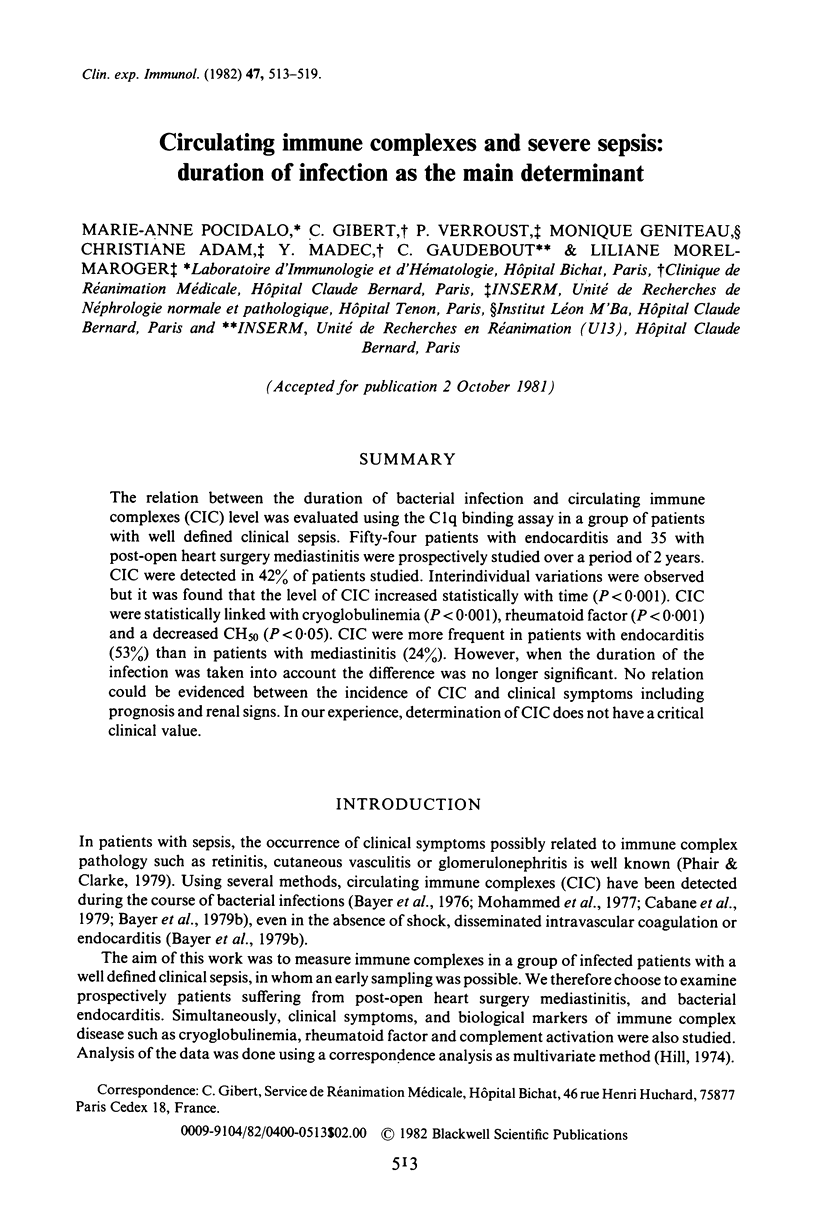

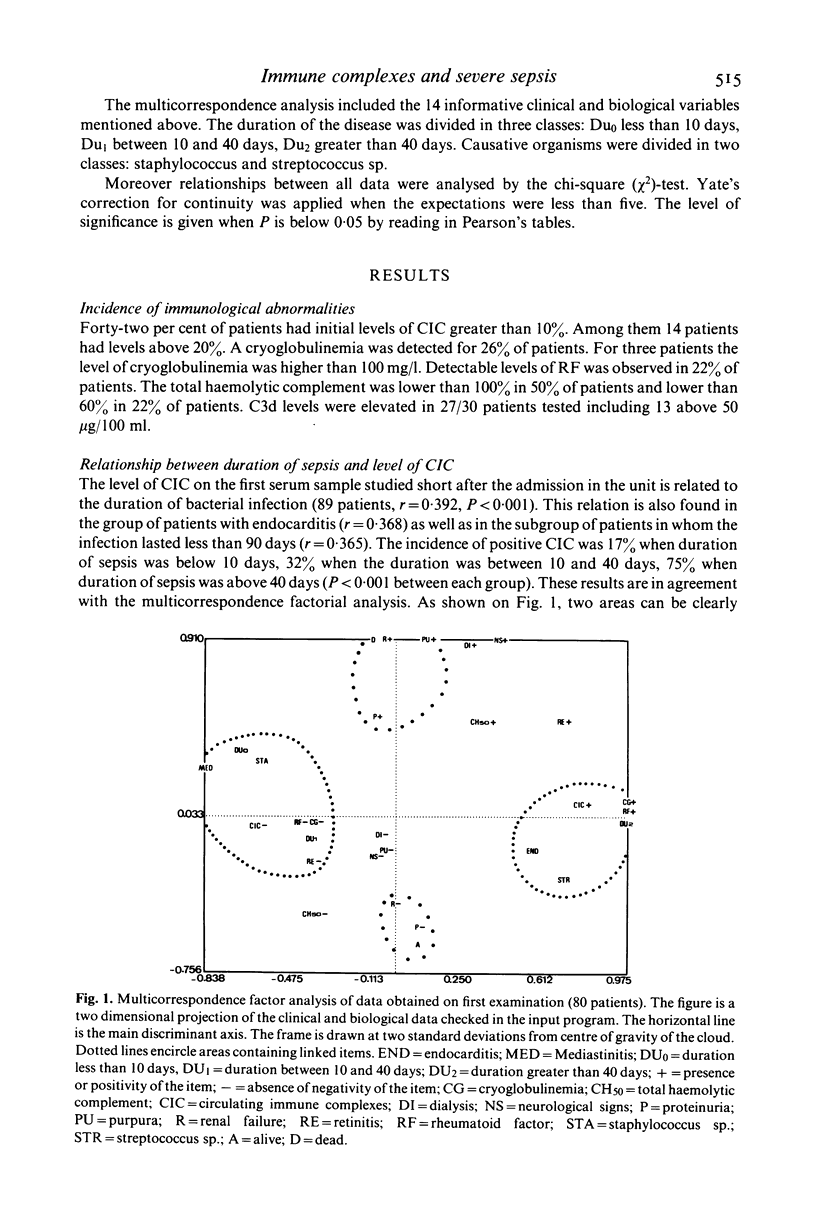
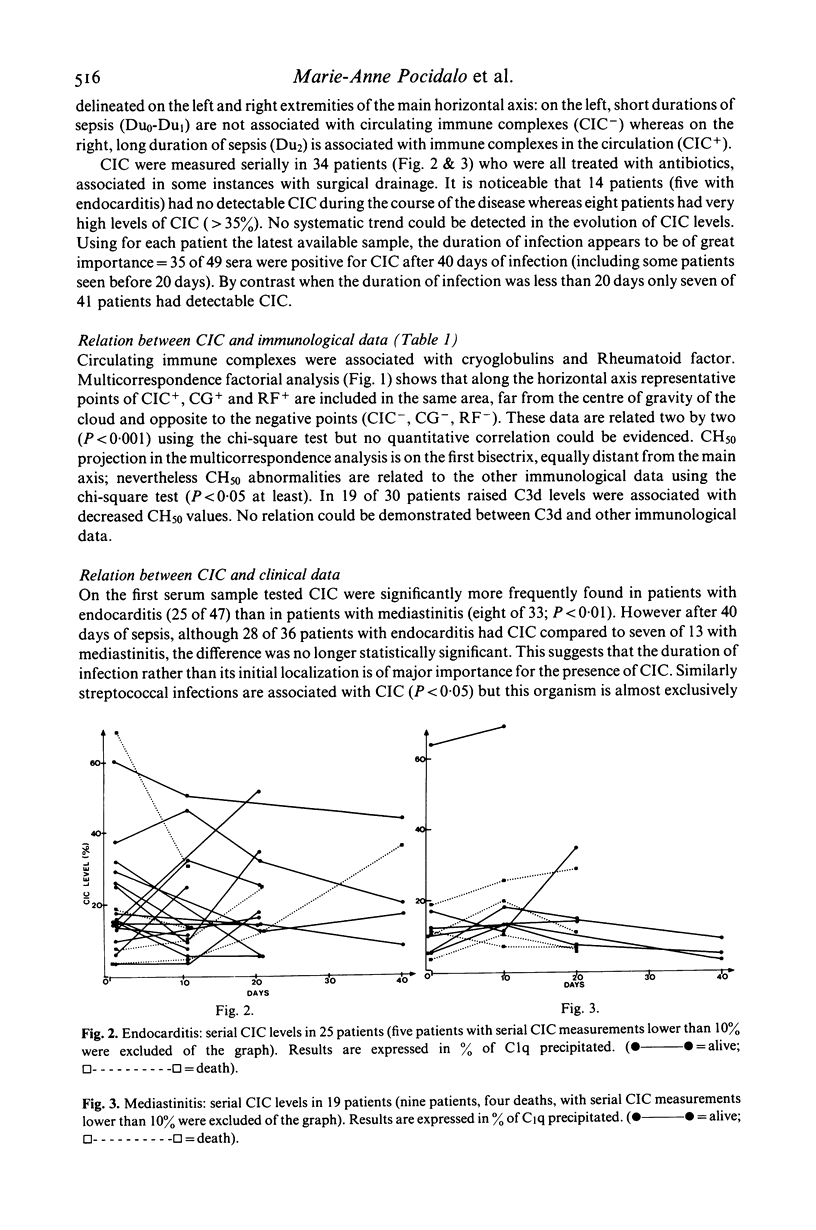
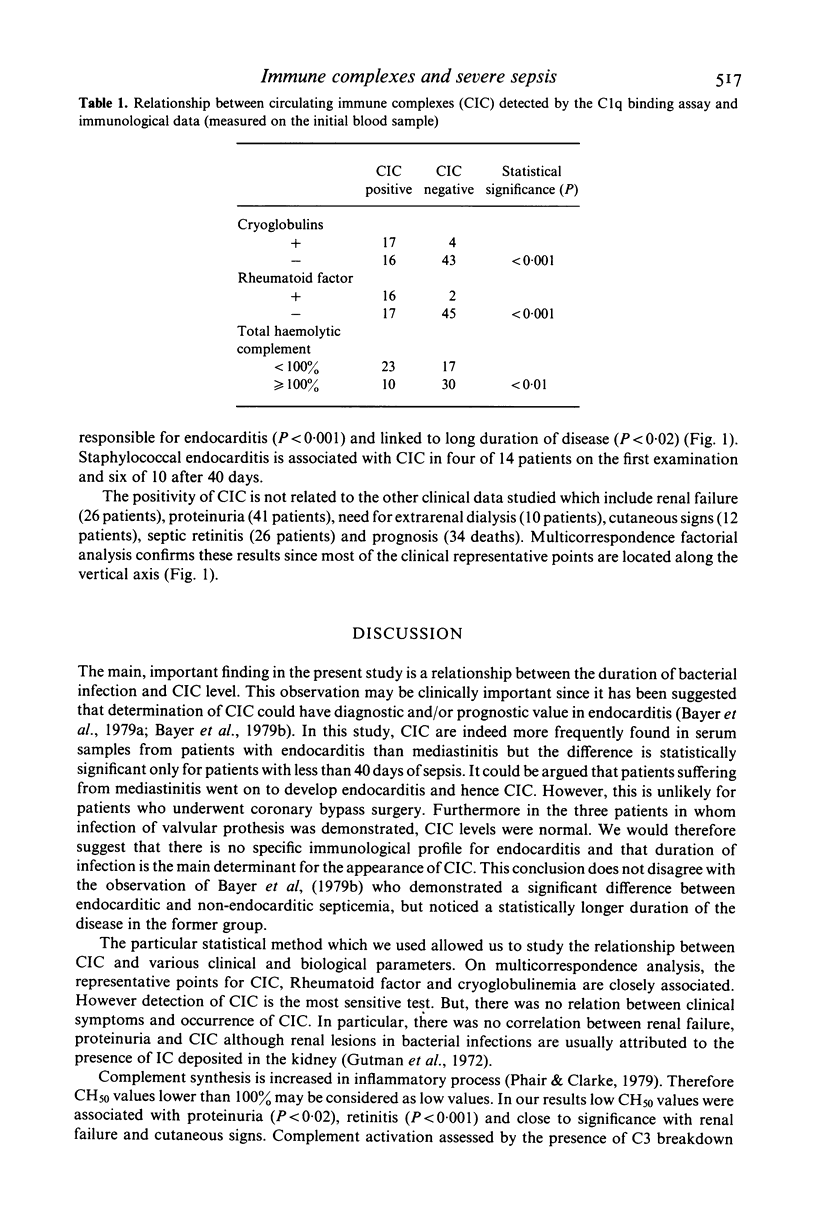
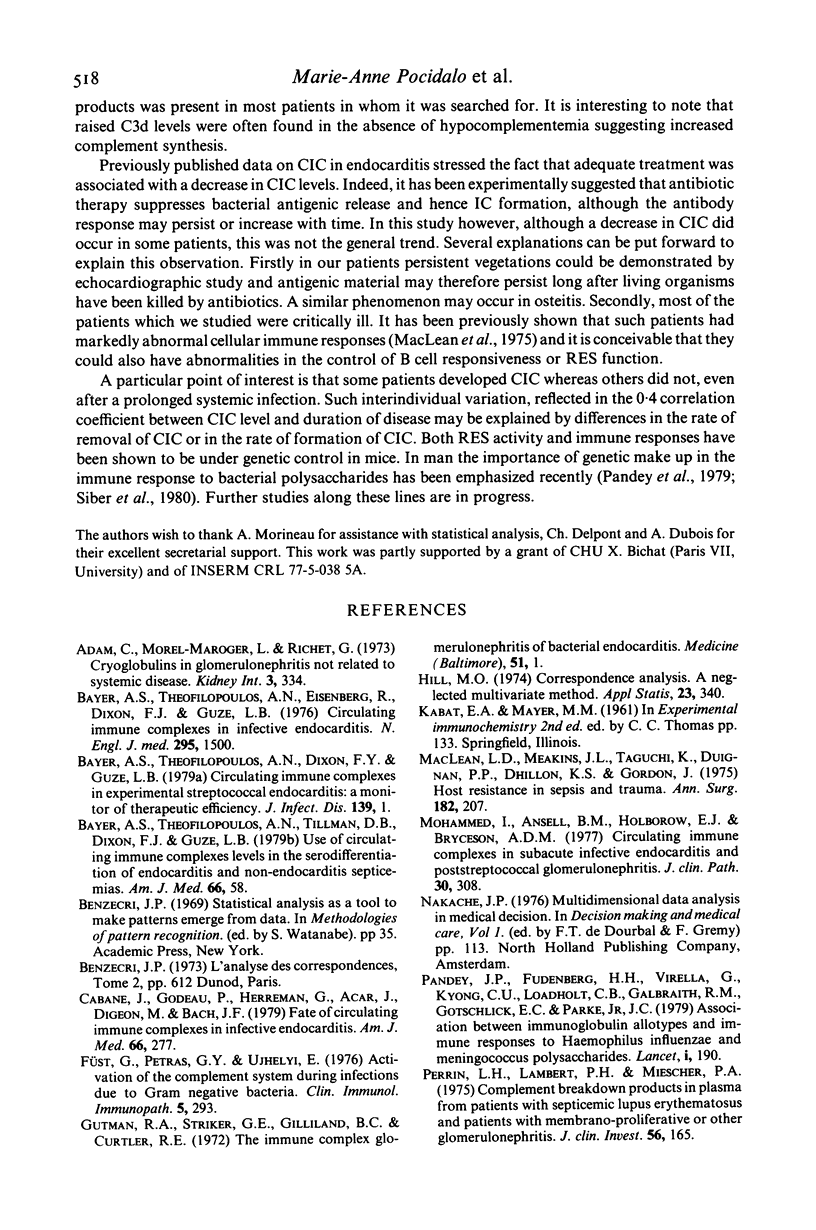
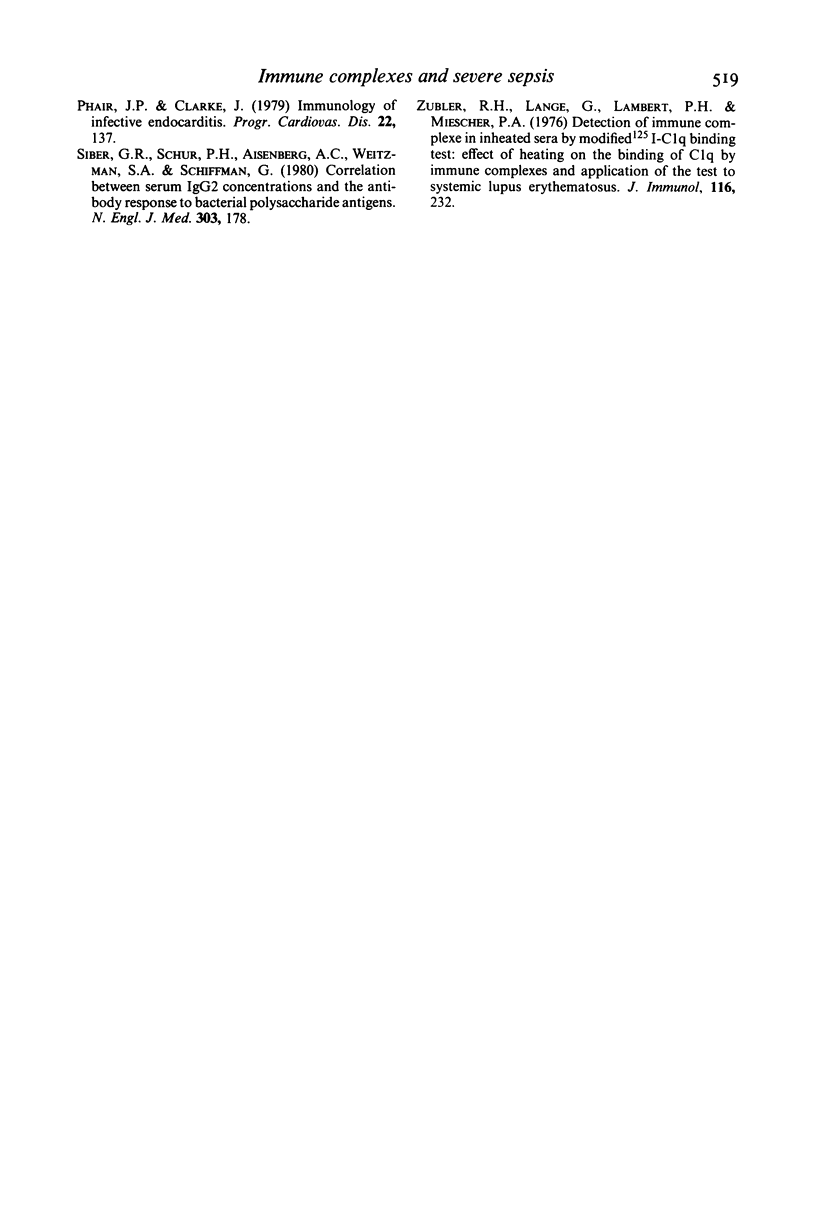
Selected References
These references are in PubMed. This may not be the complete list of references from this article.
- Adam C., Morel-Maroger L., Richet G. Cryoglobulins in glomerulonephritis not related to systemic disease. Kidney Int. 1973 May;3(5):334–341. doi: 10.1038/ki.1973.52. [DOI] [PubMed] [Google Scholar]
- Bayer A. S., Theofilopoulos A. N., Dixon F. J., Guze L. B. Circulating immune complexes in experimental streptococcal endocarditis: a monitor of therapeutic efficacy. J Infect Dis. 1979 Jan;139(1):1–8. doi: 10.1093/infdis/139.1.1. [DOI] [PubMed] [Google Scholar]
- Bayer A. S., Theofilopoulos A. N., Eisenberg R., Dixon F. J., Guze L. B. Circulating immune complexes in infective endocarditis. N Engl J Med. 1976 Dec 30;295(27):1500–1505. doi: 10.1056/NEJM197612302952703. [DOI] [PubMed] [Google Scholar]
- Bayer A. S., Theofilopoulos A. N., Tillman D. B., Dixon F. J., Guze L. B. Use of circulating immune complex levels in the serodifferentiation of endocarditic and nonendocarditic septicemias. Am J Med. 1979 Jan;66(1):58–62. doi: 10.1016/0002-9343(79)90482-0. [DOI] [PubMed] [Google Scholar]
- Cabane J., Godeau P., Herreman G., Acar J., Digeon M., Bach J. F. Fate of circulating immune complexes in infective endocarditis. Am J Med. 1979 Feb;66(2):277–282. doi: 10.1016/0002-9343(79)90545-x. [DOI] [PubMed] [Google Scholar]
- Füst G., Petrás G., Ujhelvi E. Activation of the complement system during infections due to gram-negative bacteria. Clin Immunol Immunopathol. 1976 May;5(3):293–302. doi: 10.1016/0090-1229(76)90036-2. [DOI] [PubMed] [Google Scholar]
- Gutman R. A., Striker G. E., Gilliland B. C., Cutler R. E. The immune complex glomerulonephritis of bacterial endocarditis. Medicine (Baltimore) 1972 Jan;51(1):1–25. doi: 10.1097/00005792-197201000-00001. [DOI] [PubMed] [Google Scholar]
- MacLean L. D., Meakins J. L., Taguchi K., Duignan J. P., Dhillon K. S., Gordon J. Host resistance in sepsis and trauma. Ann Surg. 1975 Sep;182(3):207–217. doi: 10.1097/00000658-197509000-00004. [DOI] [PMC free article] [PubMed] [Google Scholar]
- Mohammed I., Ansell B. M., Holborow E. J., Bryceson A. D. Circulating immune complexes in subacute infective endocarditis and post-streptococcal glomerulonephritis. J Clin Pathol. 1977 Apr;30(4):308–311. doi: 10.1136/jcp.30.4.308. [DOI] [PMC free article] [PubMed] [Google Scholar]
- Pandey J. P., Fudenberg H. H., Virella G., Kyong C. U., Loadholt C. B., Galbraith R. M., Gotschlich E. C., Parke J. C., Jr Association between immunoglobulin allotypes and immune responses to Haemophilus influenzae and Meningococcus polysaccharides. Lancet. 1979 Jan 27;1(8109):190–192. doi: 10.1016/s0140-6736(79)90584-1. [DOI] [PubMed] [Google Scholar]
- Perrin L. H., Lambert P. H., Miescher P. A. Complement breakdown products in plasma from patients with systemic lupus erythematosus and patients with membranoproliferative or other glomerulonephritis. J Clin Invest. 1975 Jul;56(1):165–176. doi: 10.1172/JCI108065. [DOI] [PMC free article] [PubMed] [Google Scholar]
- Phair J. P., Clarke J. Immunology of infective endocarditis. Prog Cardiovasc Dis. 1979 Nov-Dec;22(3):137–144. doi: 10.1016/0033-0620(79)90019-7. [DOI] [PubMed] [Google Scholar]
- Siber G. R., Schur P. H., Aisenberg A. C., Weitzman S. A., Schiffman G. Correlation between serum IgG-2 concentrations and the antibody response to bacterial polysaccharide antigens. N Engl J Med. 1980 Jul 24;303(4):178–182. doi: 10.1056/NEJM198007243030402. [DOI] [PubMed] [Google Scholar]
- Zubler R. H., Lange G., Lambert P. H., Miescher P. A. Detection of immune complexes in unheated sera by modified 125I-Clq binding test. Effect of heating on the binding of Clq by immune complexes and application of the test to systemic lupus erythematosus. J Immunol. 1976 Jan;116(1):232–235. [PubMed] [Google Scholar]


